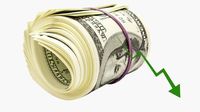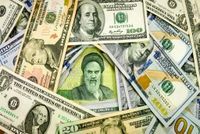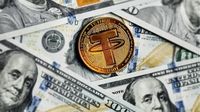The Iranian currency and gold markets are experiencing significant fluctuations as negotiations with the United States loom on the horizon. The latest data reveals that the price of 18-carat gold reached 7,269,300 Tomans, while global gold prices stood at $3,238. In terms of coins, the new design coin is priced at 88,000,000 Tomans, the old design at 79,700,000 Tomans, and smaller denominations, including the half coin at 58,000,000 Tomans and the quarter coin at 30,300,000 Tomans, have also seen notable changes.
According to the official gold and currency information network, the US dollar is currently priced at 708,336 Rials, the Euro at 802,375 Rials, and the Dirham at 192,876 Rials. These figures indicate a dynamic market responding to both local and international pressures.
Vahid Shaghaghi Shahri, an economic expert, commented on the potential impact of upcoming negotiations. He stated, "If positive news from the negotiations is confirmed, there is a high likelihood of a further decrease in prices in the currency and gold markets." This statement underscores the market's sensitivity to news regarding diplomatic discussions.
Shaghaghi Shahri elaborated on the recent behavior of the currency market, noting that before the announcement of negotiations by former President Trump, the dollar exchange rate hovered between 105,000 and 106,000 Tomans. However, following Trump's statements, the dollar rate plummeted to as low as 98,000 Tomans. He remarked, "This decrease continued until the day after Trump's interview, when the dollar exchange rate increased again to 100,000 Tomans." This volatility highlights the market's reaction to political developments.
He further pointed out that while initial reactions to the news of negotiations were positive, uncertainties remain regarding the outcomes. "The issue is not market opposition; rather, it is the ambiguity surrounding the negotiations and their potential results that keeps the market on edge," he explained. Shaghaghi Shahri expressed concerns that the likelihood of a successful negotiation outcome is less than 50%, contributing to the hesitance in the market.
Despite the initial drop in prices, many traders remain cautious. Shaghaghi Shahri emphasized that if the negotiations yield fruitful results, a significant downward trend in the currency market could ensue. He said, "If the negotiations lead to a stable agreement, we could see a return to lower price levels, potentially below 90,000 Tomans."
Meanwhile, the Canadian dollar is also showing signs of strength in the Iranian market, having climbed to new heights after the New Year. However, analysts are noting early signs of a price correction, particularly as it approaches the resistance level of 75,000 Tomans. A downward candle formation at this level suggests that selling pressure may increase, signaling the beginning of a potential short-term correction.
In this context, the Canadian dollar's upward movement has been marked by fluctuations, and a retreat to the 38% Fibonacci level of its previous upward wave is anticipated. This area has shown signs of buyer interest, but the market lacks the momentum for a swift rebound. Analysts warn that if the current supports are lost, the Canadian dollar could drop to lower levels around 62,000 Tomans.
As the market stands at a critical juncture, two scenarios emerge: a bullish scenario where support at 67,000 Tomans holds, allowing prices to rise above 75,000 Tomans, or a bearish scenario where losses could lead to further declines. Traders are advised to exercise caution, considering the possibility of both outcomes.
In addition to currency fluctuations, gold prices have also been affected by market dynamics. Following the announcement of negotiations, gold funds in the stock market experienced a decline of 10%, indicating a broader market response to the uncertainty surrounding economic policies.
As discussions between Iranian officials and U.S. representatives, including Abbas Araghchi and Steve Whitekoff, commence, the outcomes remain uncertain. The Iranian side has yet to provide clear information on the negotiations, which adds to the market's apprehension. Shaghaghi Shahri noted, "The lack of clarity regarding the negotiations contributes to the market's volatility, as traders remain wary of potential political tensions that could arise."
Further complicating the economic landscape, Mohsen Dehnavi, spokesperson for the Majlis Committee of Experts, announced that the first session of the committee in 1404 will review the bill on combating the financing of terrorism (CFT) and the Palermo Convention. Approval of these bills could lead to a reduction in international financial restrictions, potentially improving economic relations and enhancing currency inflow into Iran.
In summary, the Iranian currency and gold markets are currently navigating a landscape marked by uncertainty and volatility. As negotiations with the U.S. unfold, traders and analysts alike are closely monitoring developments, recognizing that positive outcomes could lead to significant price adjustments in both the currency and gold markets. With the potential for both upward and downward trends, the coming days will prove crucial for the economic outlook.










